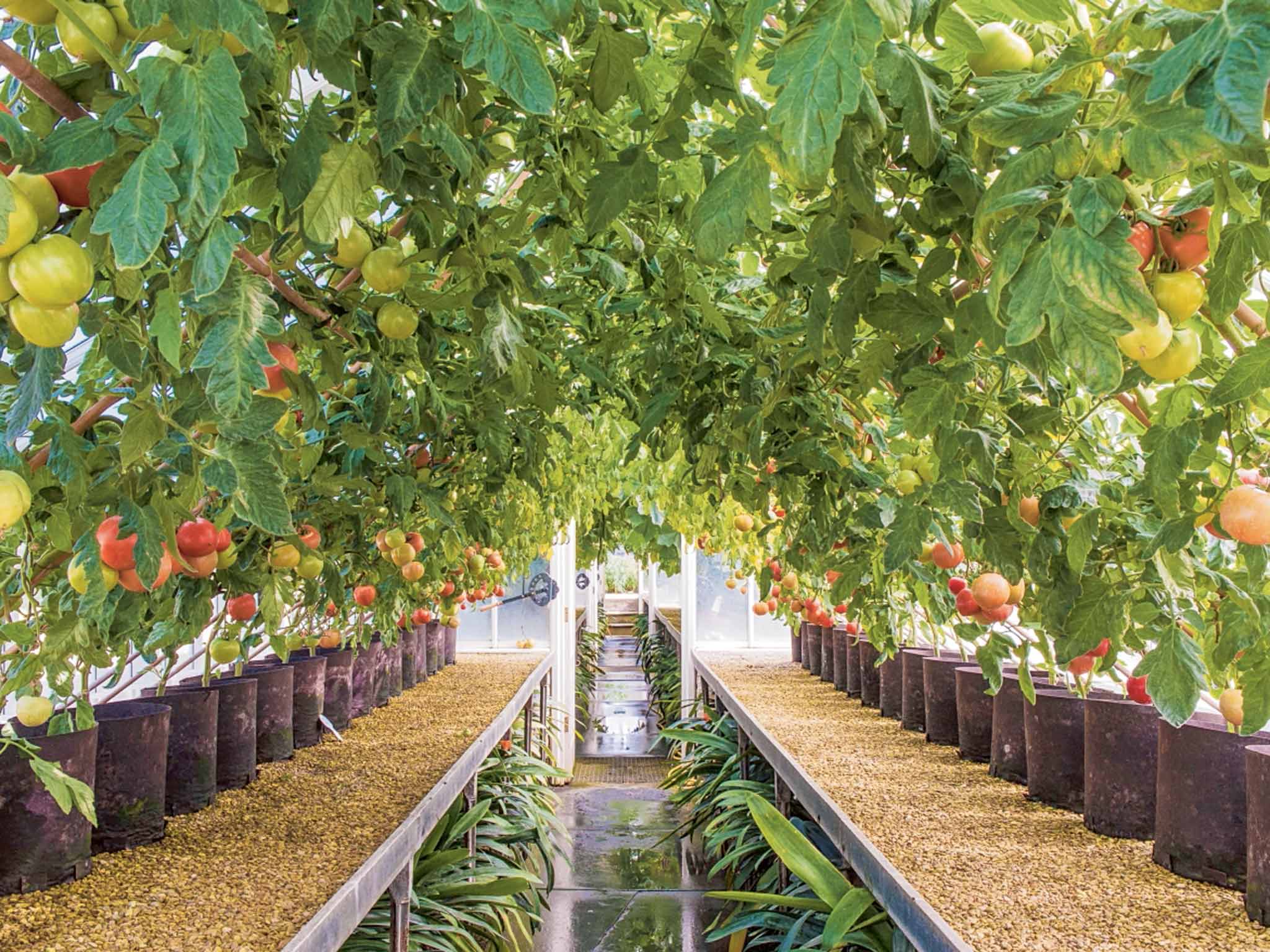Anna Pavord: There’s as much ‘wow’ as ‘how’ in two superb new gardening books
We're given constant reminders that in order to grow well, a plant must be fed well

Mary Keen writes so well that, as Fred Allen said, she makes you feel like putting your quill back in your goose. Her last book came out 20 years ago. Now we have Paradise and Plenty (Pimpernell Press £50), which is just the kind of thing a gardener needs to fill the sprawling days between Christmas and New Year.
Its subject is the four-acre walled kitchen garden at Eythrope, Lord Rothschild's place in Buckinghamshire. Few garden on this scale, but size isn't the point. What shines out from this book is the skill and attention to detail of the brilliant head gardener Sue Dickinson and her team.
Each of the gardeners keeps a diary, so we learn which varieties of fruit, vegetable and flower do well in wet summers or dry ones, which do best from spring sowings or autumn ones. This is a practical book, as well as an incredibly beautiful one. We have as much of the how as the wow.
The how – preparing soil, planting squash, making hazel wigwams, building up soil collars round the edge of pots of fruit – is frequently laid out in sequences of black-and-white images. The wow is enhanced by a clever use of fold-out pages. The pear tunnel covered in winter snow opens up to show the same tunnel in high summer, with blue salvias and purple Verbena bonariensis underneath. Hidden under the picture of young tomatoes growing in black pots in the greenhouse are the same plants later in the season, in full fruit, beautifully staked and tied in. Lists at the back of the book tell you which varieties the gardening team have found most successful: “Black Krim”, “Sungold” and “Fandango” among tomatoes; “Swift”, “Charlotte” and “Rooster” among the potatoes.
Separate sections cover vegetables; fruit; glasshouses; borders; special collections (which include auriculas, salvias, nerines and snowdrops); pots; topiary; and flowers for the house.
How do the Eythrope gardeners deal with the vast quantities of pollen beetles that drop out of sweet peas once you've picked them and brought them inside? They stand a yellow bucket of water next to the place where the plants are growing. Apparently the beetles are attracted to the colour yellow and drown in the water.
Tom Hatton's superb photographs show the breathtaking perfection of the Eythrope garden with its vine houses and fruit houses, its topiary and flower borders, but in every chapter there will be lessons worth learning. The section on tying in old-fashioned roses is typical: here is best practice born from long experience. There are constant reminders, too, that in order to grow well, plants need to be fed well. Leafmould, seaweed meal and Vitax Q4 all contribute to the plenty in this particular paradise.
This is an exceptional book, brilliant in all departments – writing, photography, design and production. I hope we don't have to wait a further 20 years before Mary Keen writes another one.
Mark Laird teaches landscape history at Harvard University and describes his book A Natural History of English Gardening (Yale University Press £45) as “a scholarly work focused on climate shifts, weather variations and the plant world between 1650-1800”. That makes it sound hard work. It isn't.
His aim is to link the observations of the naturalist Gilbert White of Selborne with the work, say, of the famous landscaper, “Capability” Brown. Born within four years of one another at the start of the 18th century, they would not have seen them as separate disciplines. It is we, corralled in the organisational silos of the 21st century, who find difficulty in seeing their interrelationship.
The two threads are woven together, for instance, in Thomas Robins' 1757 view of Painswick. The formal garden is laid out in all its splendour, with alleys, vistas, and a white-painted exedra. But around the edge, Robins paints groups of seashells, twined around with lily of the valley and forget-me-not, rosebuds and vetch. In his later “Prospect of Pan's Lodge” (both pictures are well used in Natural History) the view of the gabled house in its grove of trees is completely upstaged by the owls, the magpie and hawk that lean in from the frame to dominate the image.
The chief protagonists of Laird's book – John Evelyn, the Duchess of Beaufort and her extraordinary florilegium; the artist Mark Catesby, who produced such arresting images of the plants of the New World; Mrs Delaney – will be well known to anyone with a passing interest in garden history. But the detail and breadth of the illustrations is breathtaking: the gorgeous trade card of a Turnham Green nurseryman, John Evelyn's sketch of the whale beached on the Strand below his house at Deptford. This is another beautiful book, brilliantly brought to life by its many pictures.
Subscribe to Independent Premium to bookmark this article
Want to bookmark your favourite articles and stories to read or reference later? Start your Independent Premium subscription today.

Join our commenting forum
Join thought-provoking conversations, follow other Independent readers and see their replies